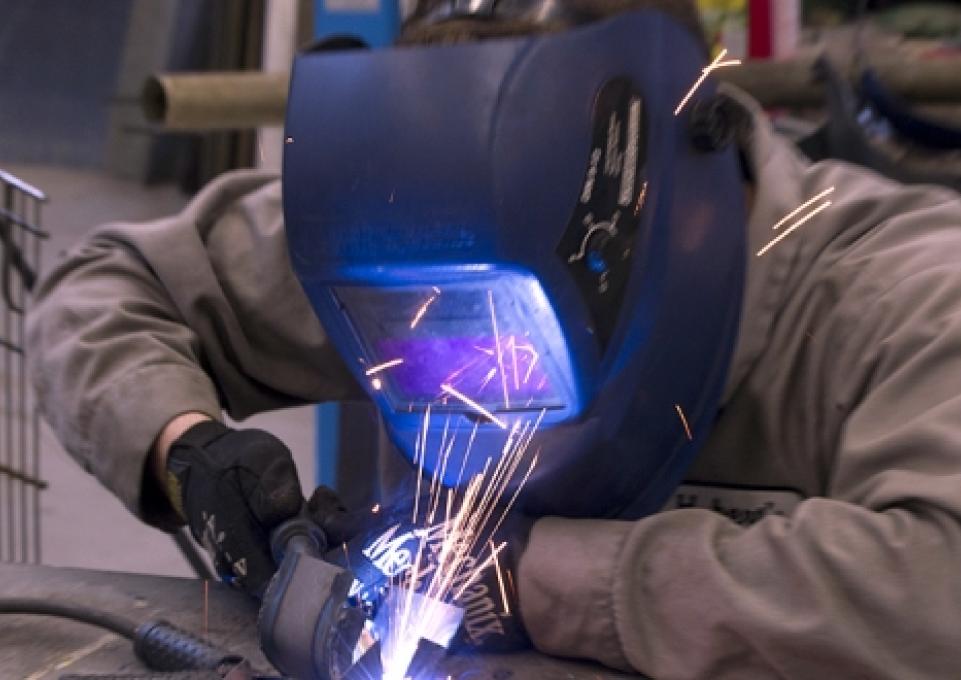
Interest in engineering technology at Buffalo State has been steadily soaring, especially in mechanical engineering technology. Enrollment in this major has doubled over the past seven years to almost 200 students. And electrical engineering technology is not far behind, according to Engineering Technology Department chair and associate professor Jim Mayrose.
The trend speaks to the quality instruction that engineering technology students can expect to receive at Buffalo State and to the exceptionally high employment rate of its graduates. In the spring, 100 percent of mechanical engineering technology seniors found jobs prior to graduation, and two-thirds of those positions paid between $60,000 and $80,000 annually.
“Our graduates are highly sought after,” Mayrose said. They have landed positions with companies such as Moog Inc., Verizon, Cameron Compression Systems, and Tyco Electronics, among many others.
Now the popular program should expect to attract even more students with a move this month from longtime quarters in Upton Hall to the first floor of the new $36.5 million Technology Building. It will be joined by the Computer Information Systems (CIS) Department on the second floor and Fashion Textile Technology (FTT) Department on the third.
“This is a tremendous change,” Mayrose said. Along with offering students state-of-the-art classrooms, the department is gaining $4 million worth of new equipment. “Even industries have trouble affording some of this equipment. The new building will definitely give students a leg up.”
The Engineering Technology Department is composed of four undergraduate majors: electrical engineering technology (electronics and smart grid), industrial technology, mechanical engineering technology, and technology education. It also offers a graduate technology education program to qualify students for teaching careers as well as a graduate program in industrial technology. Last spring, 434 students were enrolled all together.
Many of the undergraduates are nontraditional students who are already working in the field but are not yet engineers. Because the department offers evening courses, students can complete their degrees while continuing to work.
In addition to high-tech classrooms and labs, the new “green” building includes a vegetated lower roof area and a photovoltaic solar collector on the upper roof; it is expected to receive Leadership in Energy and Environmental Design (LEED) certification.
“As the country is moving toward alternative energy, we are creating classes around that idea,” Mayrose said. “We’ll be able to give students hands-on experience. The building itself is a teaching tool.”
Another boon to both engineering technology students and faculty is their close proximity to the FTT and CIS departments. Seeing one another regularly in the hallways—as opposed to once or twice a semester in meetings—lends itself to collaboration. Mayrose said he and the two other department chairs have discussed applying jointly for grants and having students work together on multidisciplinary projects.
“This new building is the spark we needed for taking our technology department to the next level,” he said.
